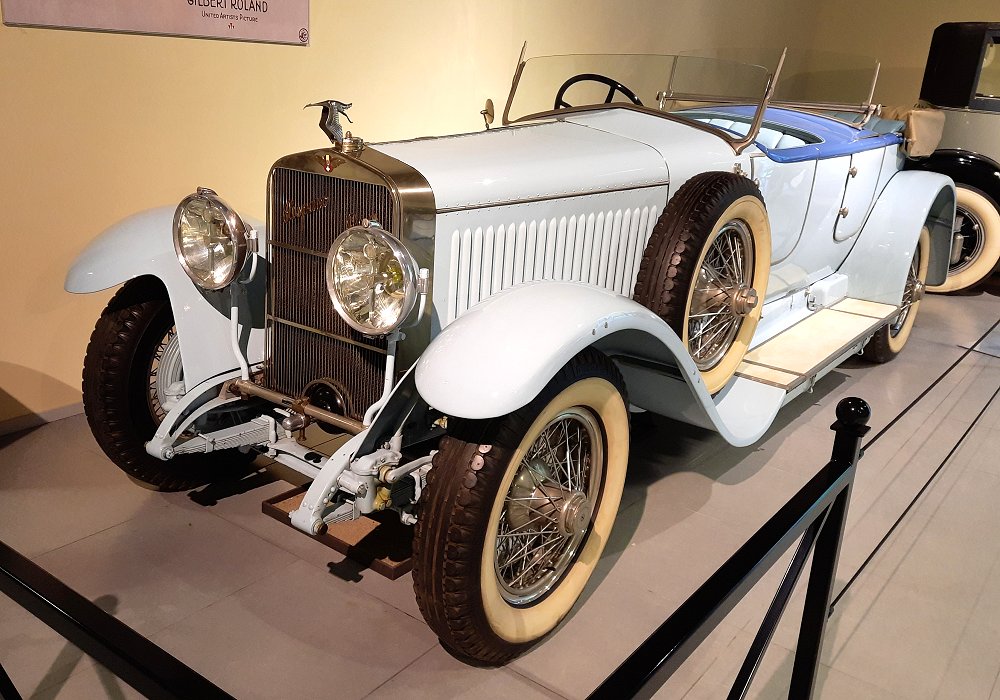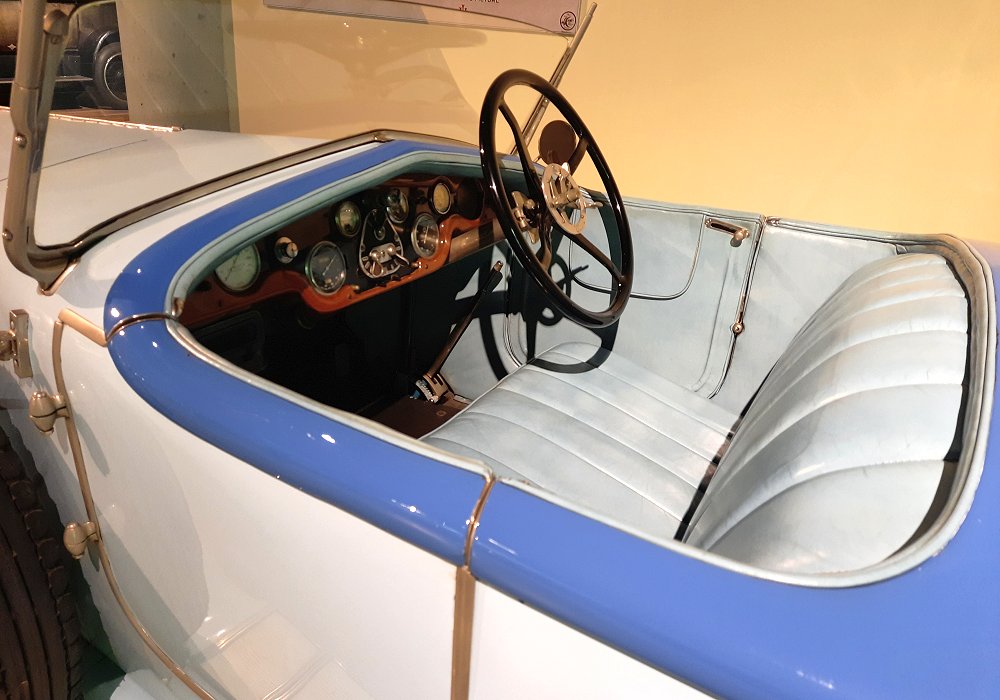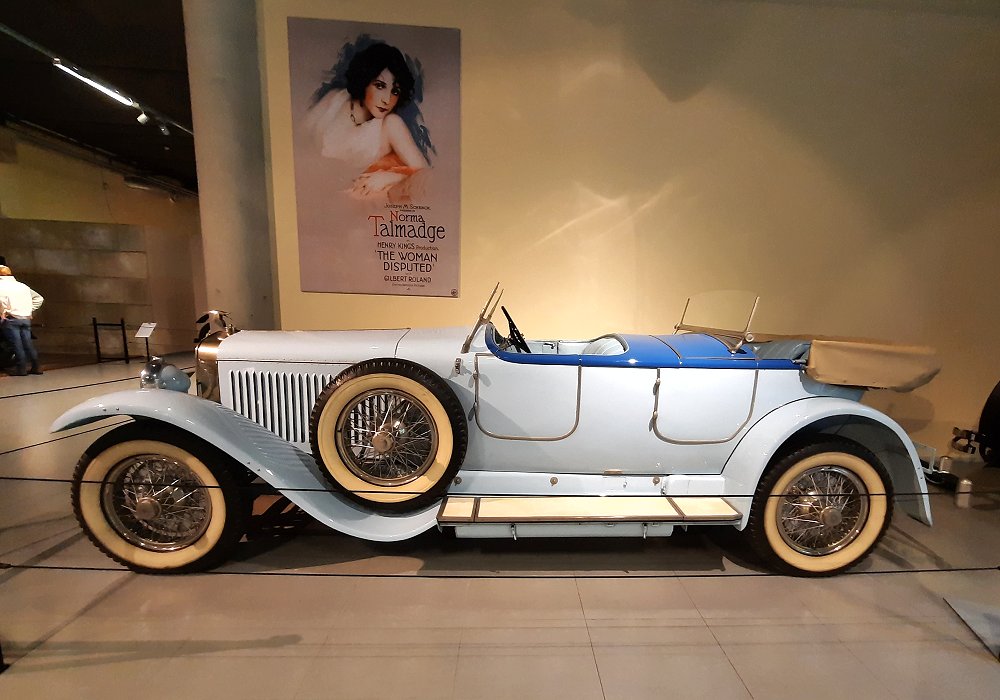Description
The Hispano-Suiza H6B Million-Guiet Dual-Cowl Phaeton was one of the most exquisite luxury automobiles of the 1920s, a magnificent fusion of engineering excellence and bespoke craftsmanship. Built upon the renowned Hispano-Suiza H6B chassis, the car represented the pinnacle of prewar motoring elegance, combining cutting-edge mechanical sophistication with coachwork by one of France’s most artistic and refined ateliers, Carrosserie Million-Guiet. Every example was unique, but those wearing the Dual-Cowl Phaeton body stood out for their grandeur, proportions, and attention to detail—hallmarks of the Hispano-Suiza name.
The H6B itself was introduced in 1919, the successor to the earlier H6, and it was one of the most advanced automobiles of its era. It was powered by a 6.6-litre inline six-cylinder engine derived directly from Hispano-Suiza’s aircraft engineering experience. Designed by Marc Birkigt, the Spanish-Swiss company’s chief engineer, the engine featured a single overhead camshaft and an aluminum block—technologies rare in automotive production at the time. It produced between 135 and 160 horsepower, depending on specification, and delivered remarkable smoothness and reliability. The powerplant’s refinement was legendary; Rolls-Royce reportedly benchmarked the H6 when designing their Phantom I.
The chassis of the H6B was equally advanced. It used servo-assisted four-wheel brakes—another first in the automobile world—allowing a two-ton luxury car to stop with ease and precision. Combined with impeccable build quality and a supple ride, the H6B offered performance and control unmatched by most of its contemporaries. The car could cruise comfortably at 130 km/h (80 mph), an impressive feat for a grand tourer of its size and era.
The example bodied by Million-Guiet as a Dual-Cowl Phaeton represented the epitome of custom coachbuilding during the Jazz Age. Million-Guiet, a Parisian coachbuilder known for its artistic flair and precise craftsmanship, designed an open touring body with flowing fenders, a long bonnet, and beautifully balanced proportions. The “dual-cowl” configuration featured two separate compartments for passengers, each protected by its own cowl and windscreen—allowing those in the rear to enjoy privacy and comfort while still traveling in an open car. Chrome detailing, hand-polished wood trim, and fine leather upholstery completed the ensemble.
The Million-Guiet bodywork was notable for its graceful lines and subtle elegance. Unlike some of the more flamboyant designs of the period, it exuded restraint and harmony, blending aerodynamic efficiency with visual grace. The Phaeton configuration gave it a commanding presence on the road—perfect for continental touring or arriving in style at society events. Each body was hand-built, tailored to the owner’s preferences, and finished with the highest levels of craftsmanship.
Driving the Hispano-Suiza H6B Million-Guiet Dual-Cowl Phaeton was as much an experience of engineering as of luxury. The smooth torque of the large straight-six, combined with the effortless servo-assisted brakes and precise steering, made it remarkably easy to handle for a car of its scale. Owners praised its silent power delivery and balance, qualities that earned Hispano-Suiza the reputation of building “the King of Cars.”
Only a small number of H6Bs were ever produced, and fewer still were bodied by Million-Guiet, making each surviving example an exceptionally rare and valuable piece of motoring history. These cars were owned by royalty, industrial magnates, and celebrities, admired not just for their prestige but for their refinement and engineering integrity.
Today, the Hispano-Suiza H6B Million-Guiet Dual-Cowl Phaeton is revered as one of the masterpieces of the classic era—a perfect union of French artistry and Swiss-Spanish precision. It embodies the spirit of the 1920s: elegance without excess, innovation married to beauty. To see one in motion is to witness an age when the automobile was more than transport—it was a statement of taste, achievement, and mechanical excellence.



